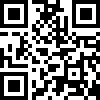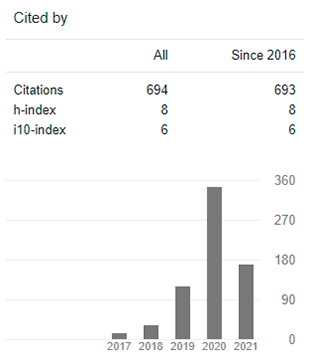Digital Divide: Opportunities and Shortcomings during the Pandemic
DOI:
https://doi.org/10.29394/Scientific.issn.2542-2987.2022.7.23.16.306-326Keywords:
digital divide, digital competence, digital literacy, remote teaching, covid-19Abstract
The transformation caused worldwide by the pandemic forced all sectors to take measures to face it. Education was no exception. In an eminent face-to-face modality, all the countries -prepared or not- put their activities remotely. The objective of this essay was to analyze the opportunities and shortcomings of remote education provided during the pandemic, especially in developing countries such as Peru. The opportunities that have become evident thanks to virtual education where large companies from around the world have made different work software available with the intention of making the adaptation process easier are reviewed; and the challenges and shortcomings that both teachers and students have had to overcome to adapt to this new normality, the same ones that range from lack of hardware, software, digital literacy and in some cases taking advantage of the resources available as well as emphasizing the pending tasks that are in a constant process of improvement due to the situation caused by the COVID-19 pandemic that pushed us to the much-needed transition to virtuality.
Downloads
References
Álvarez, M., Gardyn, N., Iardelevsky, A., & Rebello, G. (2020). Segregación Educativa en Tiempos de Pandemia: Balance de las Acciones Iniciales durante el Aislamiento Social por el Covid-19 en Argentina. Revista Internacional de Educación para la Justicia Social, 9(3), 25-43, e-ISSN: 2254-3139. Recuperado de: https://doi.org/10.15366/riejs2020.9.3.002
Bonal, X., & González, S. (2020). The impact of lockdown on the learning gap: Family and school divisions in times of crisis. International Review of Education, 66(5-6), 635-655, e-ISSN: 1573-0638. Recovered from: https://doi.org/10.1007/s11159-020-09860-z
Buchholz, B., DeHart, J., & Moorman, G. (2020). Digital Citizenship During a Global Pandemic: Moving Beyond Digital Literacy. Journal of Adolescent & Adult Literacy, 64(1), 11-17, e-ISSN: 1081-3004. Recovered from: https://doi.org/10.1002/jaal.1076
Carmi, E., & Yates, S. (2020). What do digital inclusion and data literacy mean today?. Internet Policy Review, 9(2), 1-14, e-ISSN: 2197-6775. Recovered from: https://doi.org/10.14763/2020.2.1474
ComexPerú (2021). 230,000 estudiantes dejaron de ir al colegio en 2020. Perú: Sociedad de Comercio Exterior del Perú.
Cunias, M., & Medina, I. (2021). Resiliencia en estudiantes adolescentes de una institución educativa de una zona urbano-marginal durante el covid-19. UCV Hacer, 10(1), 31-39, e-ISSN: 2414-8695. Recuperado de: https://revistas.ucv.edu.pe/index.php/ucv-hacer/article/view/575
Domínguez, M. (2019). La Cibersociedad: Modelo por Competencias Digitales y Desafío en la formación Profesional del Profesor Universitario. Revista Scientific, 4(12), 312-328, e-ISSN: 2542-2987. Recuperado de: https://doi.org/10.29394/Scientific.issn.2542-2987.2019.4.12.16.312-328
Galvis, Á. (2020). Transformación educativa mediada con tecnología digital: oportunidad única de cara a la “nueva normalidad”. Revista Innovaciones Educativa, 22(Especial), 28-32, e-ISSN: 2215-41. Recuperado de: https://doi.org/10.22458/ie.v22iEspecial.3156
Hee, C., & Padilla, A. (2020). Technology for Educational Purposes Among Low-Income Latino Children Living in a Mobile Park in Silicon Valley: A Case Study Before and During COVID-19. Hispanic Journal of Behavioral Sciences, 42(4), 497-514, e-ISSN: 1552-6364. Recovered from: https://doi.org/10.1177/0739986320959764
Hernández, S., Mulas, F., & Mattos, L. (2004). Plasticidad neuronal funcional. Revista de Neurología, 38(S1), 58-68, e-ISSN: 1576-6578. Recuperado de: https://doi.org/10.33588/rn.38S1.2004073
Livari, N., Sharma, S., & Ventä-Olkkonen, L. (2020). Digital transformation of everyday life – How COVID-19 pandemic transformed the basic education of the young generation and why information management research should care?. International Journal of Information Management, 55, 1-6, e-ISSN: 0268-4012. Recovered from: https://doi.org/10.1016/j.ijinfomgt.2020.102183
MECT (2007a,b). Uso pedagógico de las tecnologías de la información y la comunicación. Eje 3: Alfabetización digital. 1a edición, ISBN: 978-950-00-0613-2. Buenos Aires, Argentina: Ministerio de Educación, Ciencia y Tecnología.
Ribble, M., & Bailey, G. (2007). Digital citizenship in schools. 7th Edition, ISBN: 978-1-56484-232-9. Oregon, Estados Unidos: International Society for Technology in Education (ISTE).
Rodicio-García, M., Ríos-de-Deus, M., Mosquera-González, M., & Penado, M. (2020). La Brecha Digital en Estudiantes Españoles ante la Crisis de la Covid-19. Revista Internacional de Educación parala Justicia Social, 9(3e), 103-125, e-ISSN: 2254-3139. Recuperado de: https://doi.org/10.15366/riejs2020.9.3.006
Sahlberg, P. (2020). Will the pandemic change schools?. Journal of Professional Capital and Community, 5(3-4), 359-365, e-ISSN: 2056-9548. Recovered from: https://doi.org/10.1108/JPCC-05-2020-0026
Downloads
Published
How to Cite
Issue
Section
License
Copyright (c) 2022 INDTEC, C.A.

This work is licensed under a Creative Commons Attribution-NonCommercial-ShareAlike 4.0 International License.
The content of the journals of this site, are under a Creative Commons Attribution-Noncommercial-Share Alike 4.0 International License.













